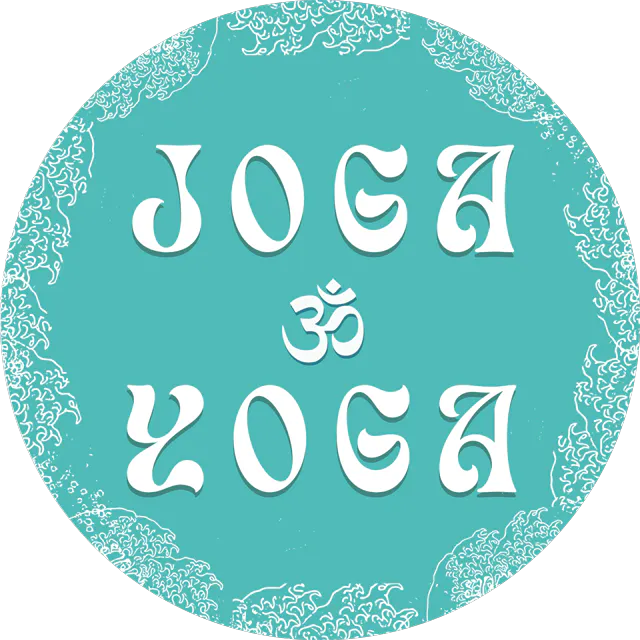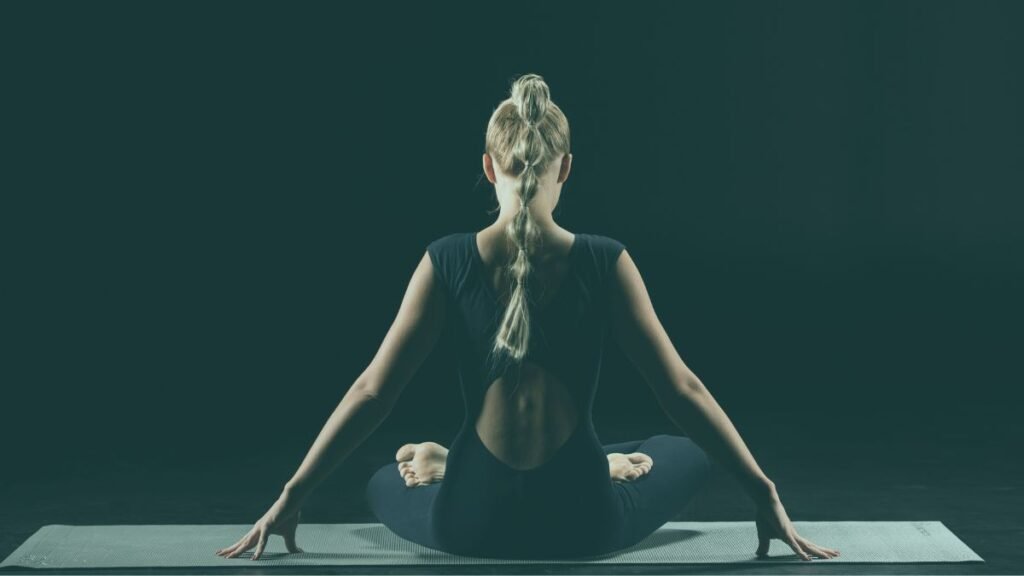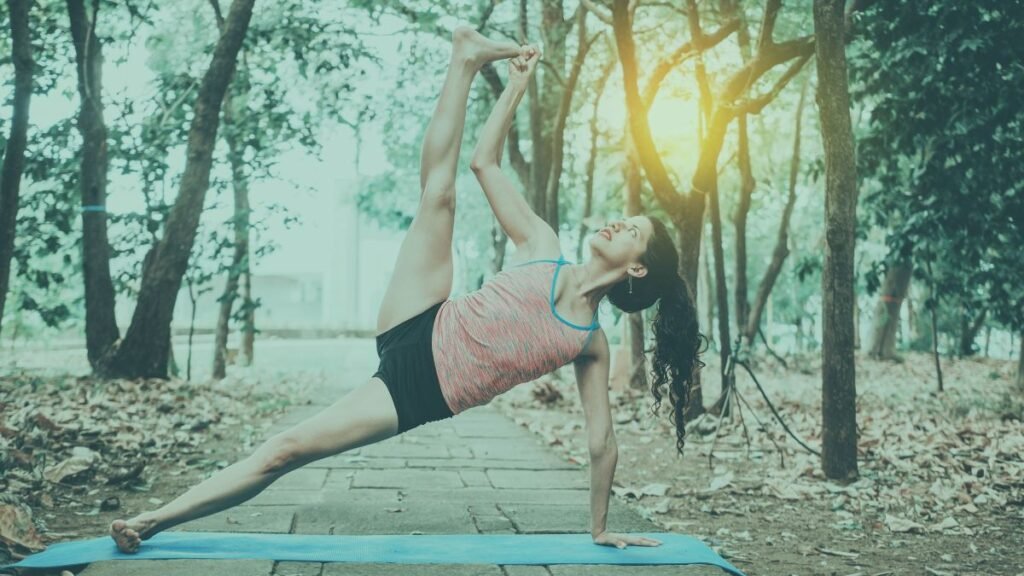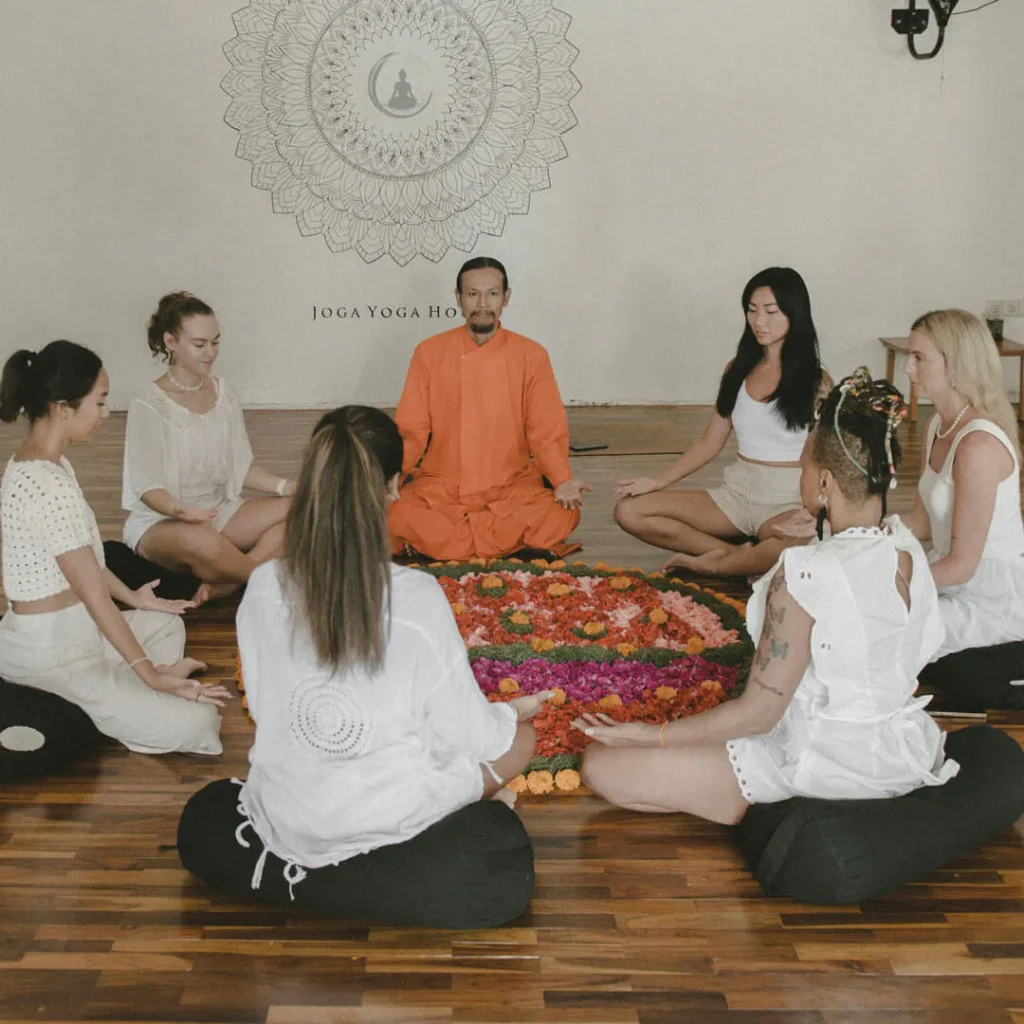So, you’re passionate about yoga, you enjoy hitting the mat regularly, but there’s just one thing stopping you from taking that next step—becoming a yoga teacher. You’re not doing headstands at will, and you’ve got flexibility that’s about as reliable as your Wi-Fi. Sound familiar? You’re not alone. The great news is, being a certified yoga teacher isn’t reserved for the ultra-bendy pros.
In fact, you don’t have to be able to twist yourself into a pretzel to get your 200RYT (Registered Yoga Teacher certification). Many yoga teachers started out just like you—average skills but an exceptional desire to share the practice. So, how skilled do you really need to be?
How Skilled Do You Really Need to Be for 200RYT Yoga Certification?
The short answer: You don’t need to be a yoga wizard to get certified. If you’ve been practicing yoga on and off or even just consistently for a while, you’ve got what it takes to start a 200RYT training. The purpose of the training isn’t to crown the most flexible; it’s to teach you how to lead and guide others, how to understand the history and philosophy of yoga, and how to communicate your practice effectively.
There’s this idea floating around that you need to be doing handstands and scorpion poses to even think about becoming a teacher. Spoiler alert: you don’t. Yoga teacher training is designed to help you grow as a practitioner, both in asana practice and in understanding yoga beyond the physical poses. The only real requirement? Commitment.
Understanding the 200RYT Yoga Teacher Certification
The 200RYT certification is the first step into the world of becoming a certified yoga teacher. It’s a 200-hour program, typically spread out over a few weeks or months, depending on whether you go for an intensive or a more relaxed schedule. The goal? To give you a strong foundation in the asanas (poses), pranayama (breathing techniques), and the core philosophy behind yoga.
But here’s the kicker—you don’t need to show up as a yoga expert. The training isn’t about showcasing your physical ability. Instead, it’s focused on teaching you how to guide others in their yoga practice. This means you’ll learn:
- Alignment and Safety: How to safely guide students into poses and ensure they’re doing it correctly.
- Yoga Philosophy: The history, principles, and deeper meaning of yoga (because it’s not all about fancy postures).
- Teaching Techniques: How to create sequences, give instructions, and lead a class with confidence.
So, while yes, you’ll definitely improve your personal practice during the course, that’s just one piece of the puzzle. The certification is more about understanding the art of teaching, rather than just mastering difficult poses.
Most importantly, 200RYT courses welcome people of all skill levels. You’re there to learn, not to impress. As long as you’ve got a willingness to practice and learn, you’re already ahead of the game.

Skills vs. Teaching Ability: What Matters More in Yoga Teacher Training?
At Joga Yoga, we understand the misconception out there—that you need to be a yoga superstar to even consider teaching. But here’s the truth: Being “good” at yoga (in the Instagram-flexibility sense) and being a great yoga teacher are two very different things.
Teaching yoga isn’t about showing off poses. Some of the most inspiring and effective yoga teachers aren’t the ones with the perfect headstand, but those who can communicate and create an inclusive space for students to grow. It’s about empathy, patience, and understanding how to guide people safely through their own practice. At Joga Yoga, we’ve had teachers of all backgrounds and abilities lead with confidence because they knew how to connect with their students, not because they were the most flexible person in the room.
Our 200RYT program is structured to focus on teaching techniques, sequencing, and anatomy—so you’re not just teaching poses, but teaching them in a way that’s accessible and safe for all body types and experience levels. You’ll learn to:
- Read the room: Adjust classes to suit beginners, intermediates, or mixed levels.
- Cue like a pro: Give clear, concise instructions without confusing or overwhelming your students.
- Provide modifications: Offer different options to students based on their abilities, ensuring everyone can participate and benefit from the practice.
At the end of the day, yoga is about connection, not perfection. If you can guide others to find that connection with their body and mind—whether through meditation, breathwork, or simple poses—you’re already well on your way to being a great yoga teacher.
Why Average Practitioners Often Make the Best Teachers
Here’s a little secret that’s not talked about enough: You don’t have to be the most advanced yoga practitioner to be an amazing teacher. In fact, some of the best teachers are the ones who had to work harder to progress in their own practice. Why? Because they’ve been where their students are now—struggling with flexibility, balance, or even motivation—and they know how to guide them through those challenges.
At Joga Yoga, we’ve seen this time and time again. Some of our most inspiring graduates were those who didn’t come in as “yoga experts.” They were passionate, consistent, and open to learning. Those qualities, not how far they could stretch in a pose, made them exceptional teachers.
Think about it: If everything came easily to you in yoga, would you be able to relate to someone who’s struggling? Probably not. But if you’ve worked to improve your poses, overcome physical limitations, or simply stayed consistent with your practice despite setbacks, you have the tools to empathize and connect with your students in a real way. At Joga Yoga, we teach you how to leverage that experience to make your classes welcoming and inclusive.
Plus, let’s be real—no one’s looking for a teacher who’s there to show off. Students want someone who can meet them where they are and guide them safely through their practice. They want a teacher who can break things down, give modifications, and create a supportive atmosphere. And guess what? That teacher can absolutely be you.
So, if you’ve been holding back because you think you’re not “good enough” at yoga, let that go. Being an average practitioner means you understand the journey—and that makes you incredibly valuable as a teacher.
How to Prepare for Your Yoga Teacher Training
So, you’ve decided to go for it and get your 200RYT certification—awesome! Now you might be wondering, how should you prepare? Whether you’ve been practicing consistently or you’re just getting back into the flow, there are a few simple steps you can take to make sure you’re ready for the journey ahead.
1. Get Back to Consistency
If you’ve been practicing yoga on and off, now’s the time to lock down a more consistent routine. You don’t need to be pulling off advanced poses, but regular practice will help you feel more comfortable as you move through your training. Aim for a few classes a week, whether in-person, online, or even a home practice. The key is to show up for yourself, even if that just means 20 minutes on the mat some days.
2. Start Exploring Different Styles
Yoga teacher training will expose you to a variety of yoga styles—think Vinyasa, Hatha, and Yin. Before you start your training at Joga Yoga, try exploring different types of yoga so you can get a feel for what resonates with you. This way, when you’re diving into all the different techniques during the program, you’ll already have a foundation.
3. Read Up on Yoga Philosophy
Yoga is way more than just physical poses. At Joga Yoga, we’ll take you deep into the philosophy and history of the practice, including key texts like the Yoga Sutras and the Bhagavad Gita. Before your training starts, it’s a good idea to begin reading up on these to familiarize yourself with the concepts. Even a basic understanding will help you feel more prepared when you dive into it in class.
4. Start a Simple Meditation Practice
Meditation is a huge part of the yoga practice, but for a lot of people, it’s also the hardest. If you’ve never really meditated before, don’t sweat it—start small. Just 5-10 minutes a day can make a difference. You’ll thank yourself when meditation comes up in your Joga Yoga teacher training, and you’ve already built a bit of a habit.
5. Mentally Prepare for the Journey
Yoga teacher training can be intense—physically, mentally, and emotionally. At Joga Yoga, we encourage our students to come into the program with an open mind and heart, ready to grow not just as a yoga practitioner but as a person. Be prepared for self-reflection, personal breakthroughs, and maybe even a few challenges along the way. That’s part of what makes this journey so transformative.

Finding the Right Yoga Teacher Training for You
Choosing a yoga teacher training program can feel overwhelming with all the options out there, but it’s important to find a program that aligns with your personal goals, values, and schedule. If you’re serious about becoming a yoga teacher, here’s how to find the right fit for you.
1. Look for a School That Matches Your Values
Not all yoga schools are created equal. Some focus heavily on the physical aspect of yoga, while others dive deeper into philosophy, meditation, and the spiritual side of the practice. At Joga Yoga, for example, we take a holistic approach that balances physical practice with in-depth teachings on yoga philosophy, pranayama, and meditation. Ask yourself what you want to get out of the training and find a school that reflects that.
2. Consider the Class Size
Class size can make a big difference in your experience. Some programs pack in students like sardines, while others keep things more intimate. At Joga Yoga, we cap our classes to ensure everyone gets the attention and feedback they need. If you want a more personal experience, make sure to look for a school that limits class sizes so you’re not just another face in the crowd.
3. Research the Instructors
You want to learn from people who live and breathe yoga, not just teach it. Check out the credentials of the instructors in any program you’re considering. Do they have years of experience? Have they trained in different styles? At Joga Yoga, our teachers come from diverse backgrounds and bring a wealth of knowledge, from traditional Hatha and Vinyasa to more specialized areas like anatomy and pranayama.
4. Check the Program’s Flexibility
We get it—life is busy. If you can’t drop everything for a few weeks, look into programs that offer more flexible scheduling options. Joga Yoga offers both intensive in-person training as well as hybrid online options, so you can choose what works best for your schedule. Make sure to pick a program that accommodates your needs without sacrificing quality.
5. Read Reviews and Testimonials
Don’t just take the school’s word for it—see what past students have to say. Look for reviews on third-party sites or directly on the school’s website. At Joga Yoga, we’re proud to have glowing reviews from our graduates, who’ve praised not just the quality of the teaching, but the supportive and inclusive community we foster.
6. Evaluate the Location and Environment
If you’re doing an in-person training, the location matters. You want a place that supports your learning, not just physically, but mentally and emotionally. Bali, where Joga Yoga is based, offers a serene, tranquil environment that’s perfect for deepening your practice and connecting with yourself on a deeper level. Make sure wherever you choose feels right for your growth.
Ready to Start Your Yoga Teacher Journey?

If you’re feeling the call to become a yoga teacher, don’t let doubts about your skill level hold you back. As we’ve covered, you don’t need to be the most flexible, the strongest, or the most advanced practitioner to lead others in their yoga journey. The best teachers are the ones who have passion, empathy, and the dedication to keep learning—qualities that are often more important than being able to nail a handstand.
At Joga Yoga, we believe that everyone has the potential to become a great yoga teacher, regardless of where they start. Our 200RYT program is designed to guide you through the process, with expert teachers who will support you every step of the way. Whether you’re looking to deepen your own practice or ready to share yoga with others, our training offers the perfect balance of theory, practice, and personal growth.
Ready to take the plunge? Join us at Joga Yoga in Bali, and start your transformative journey today. Whether you’re a beginner or a seasoned yogi, we’ve got a place for you.






